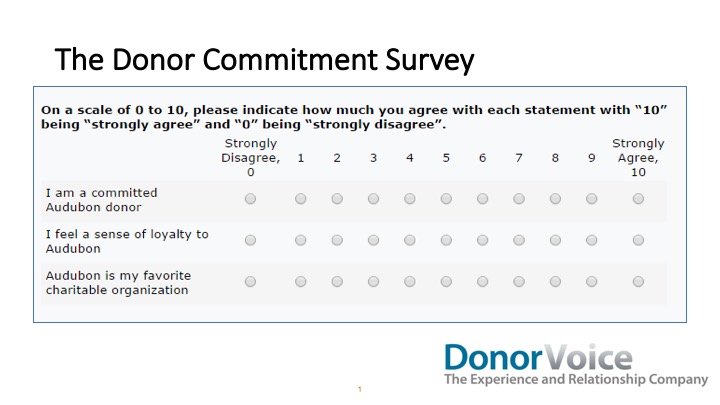Roger Craver, founder of DonorVoice and editor at the must-read blog, The Agitator, describes the power of the donor commitment survey, a simple three-question survey that’s highly predictive of donor giving.
He’ll show you how to put it to work for your organization … including what to do with the information.
This is information that can transform your fundraising and lift your ability to treat the right donors in the right ways to new levels of effectiveness.
Here’s the complete survey. Update it with the name of your organization, but do not change any of the questions, as that will destroy the predictive power of the information![/vc_column_text]












11 Comments. Leave new
[…] Jeff Brooks recently interviewed Roger for an explanation of the power of this survey. You can check out the video here. […]
How do you recommend this survey be deployed? For an honest answer, it seems like we have to create the safety of anonymity. But if one of the prime advantages is finding out an individual donor’s attitude, we’d have to engage directly. If this is meant to sit on the website, would it be in the donor landing zone–where there is less traffic–or where?
This survey can’t be anonymous. It’s not about finding out the loyalty of the group in general, but of one person at a time. You’re right that if it’s just sitting on a landing page somewhere, it will get little traffic. To do this, you need to directly engage people, by email and/or direct mail. And it’s an ongoing project to get as many people as possible to take the survey. Good luck!
Anyone who actually completes the survey is pretty committed.
Interesting, but the three survey questions seem to be one question phrased in three very slightly different ways. I wonder if there would be benefit in making each question stand alone. To gauge donor loyalty, maybe we’d focus one question each on mission, charity effectiveness, and charity affinity. For Audubon, maybe we’d have: 1) I believe birds and habitats are under attack, 2) I think Audubon is taking steps to protect them, and 3) I feel committed to Audubon as a donor.
Hi George!
I’ll speak for Roger here to say that quite a bit of research went in to creating the tool, and the questions, in their exact wording, are what gives it its predictive power. I had the same thought when I first encountered this tool. I chalk it up to the oddness of qualitative research.
The questions you’re proposing are the kind to ask in a Supporter Connection Survey, a very powerful tool for getting meaningful information from donors. We have a course on this at https://www.moceanic.com/our-courses/supporter-connection-survey/
Talk to me about getting your clients to look into this! It could make a very big difference for them.
How is the score aggregated? Are we to look at the individual question score or the average score of each question?
You look at the average score for the 3 questions for each donor. (So someone who answered 10-10-1 would have a score of 7.) You are not at all interested in the totals across respondents; that doesn’t give you any info you can act on. It’s a scoring tool for individual donors, not a research tool. Donors with high scores are more likely to keep giving, so you can use that to improve on RFV (recency/frequency/value) selects when making decisions on how to treat a donor.
I suspect that the donor’s name & address is on the back of the questionnaire. Should there be a place for additional comments?
Yes, that’s typically where the donor’s information is. If you have room, you can leave extra space there for additional comments. But some of the questions also have space for comments as well.
Hi,
how do we handle donors who only answered two of the three questions? Can we still calculate the score?